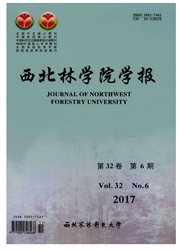

 中文摘要:
中文摘要:
风力发电站常常安装在偏远的海岛、高山、沙漠地区。叶片在使用过程中经常要受到高温、闪电、野火等等不利因素的影响而烧损。因此,风电叶片材料阻燃性能的选择就变得十分重要。本文采用HRR。热释放率系统、HC-2氧指数测定仪等仪器测定和分析由酚醛树脂、酚醛环氧树脂、环氧树脂生产的竹增强复合材料阻燃性能的影响。结果表明:酚醛树脂作为竹增强复合材料的胶粘剂的阻燃效果最差,其在HRR。热释放率系统测试中,着火燃烧时间最短(43s),达最高热释放率时间最短(97),热释放率峰值最高(99.81kW/m^2),氧指数值最低(46),2min内总热释放量最高(81.67kW·min^-1·m^-2),5分钟内总热释放量最高(323.72kW·min^-1·m^-1);环氧树脂作为竹增强复合材料的胶粘剂的阻燃效果最好,其在HRR。热释放率系统测试中,着火燃烧时间最长(47s),达最高热释放率时间最长(228s),热释放率峰值最低(69.27kW/m^2),氧指数值最高(55),2分钟内总热释放量最低(40.52kW·min^-1·m^-2),其在5min内总热释放量最低(217.73kW·min^-1·m^-2)。
 英文摘要:
英文摘要:
The wind turbines usually are installed in remote areas, such as islands, high mountain, and desert area. The turbine blades are easy burn down due to the suffering of high temperature, lightning, and wild fire. For these reasons, the flame-retardant property of the material selection of the wind turbine blades plays an important role in the wind turbine designing. In this study the flame-retardant properties of heat release rate (HRR) and the oxygen index value of the bamboo strengthened composite material made from phenol-formaldehyde resin (PF), and phenol-formaldehyde and epoxy resin, epoxy resin were tested by HRR3 Heat Release Rate System equipment and HC-2 oxygen index equipment. The results were as. The inferior flame-retardant property exhibited when the bamboo strengthened composite material were made from phenol-formaldehyde resin (PF) manifested by its shortest ignityng times (43 s), the shortest time when the material reached its highest heat release rate (97 s), the highest peak value of heat release (99. 81 kW/m^2), the lowest oxygen index value (46), and the highest value of total heat release within 2 minutes (81.67 kW · min^-1 · m^-2)and 5 minutes (323. 72 kW · min^-1 · m^-2) ;Bamboo strengthen composite material made from epoxy resin however ,exhibited exellent flame-retardant property,manifested by its longest igniting times (47 s), the longest time when the material reached its highest heat release rate (228 s), the lowest peak value of heat release (69.27 kW/m^2) ,the highest oxygen index value (55) ,and the lowest value of total heat release within 2 minutes (40. 52 kW · min^-1 · m^-2)and 5 minutes (217. 73 kW · min^-1 · m^-2).
 同期刊论文项目
同期刊论文项目
 同项目期刊论文
同项目期刊论文
 期刊信息
期刊信息
